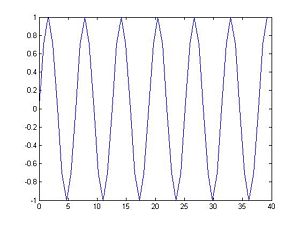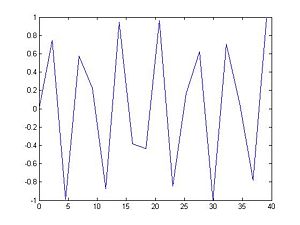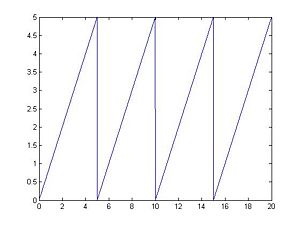Contents
Getting the signal -- No. 1
The signal that I've got was taken from my own solution: y = sin(x)
Getting periodic signal
When you have that signal with a sampling rate at pi/4, you will see a periodic signal as shown in the picture on the right.

Getting non-periodic signal
When you have that signal with a sampling rate at 2.3, you will see a non-periodic signal as shown in the picture on the right.

Getting the non-periodic signal -- No. 2
I took a very simple non-periodic signal from my own solution: y = x
Changing it into a periodic signal
When we put multiple non-periodic signals together, we practically repeat it so we have a periodic signal


